Most folks predator hunt after deer season and before spring turkey season. Cold winter is prime time for furs. Here in Texas there isn’t much of a prime time, we do occasionally get a cold spell that last a few weeks but for the most part furs are never really good. I don’t chase the pointy tooth critters for the fur anyway. I will sell some hides if they are decent but my goal is fun and population control.
As the price of furs has gone down around here the less guys are trapping so the more predators we have. I agree all wildlife has a right to live and breed but there must be a balance and too many raccoons means less turkey and quail, too many coyotes and bobcats means less deer. I don’t shoot every predator I come across as I do like to watch them but I also understand what the balance should be.
Calling in any animal, predator or not is one of the most exciting kinds of hunting I think there is. If you’ve never had a big gobbler hammering in your face on a cool morning or a big whitetail responding to rattling horns looking for a fight then you haven’t truly experienced calling animals.
The difference in calling in the plant eaters versus the meat eaters is the meat eaters come in expecting a meal and most times that means they come in fast. It can be a wild few seconds at times.
Every circumstance is different when calling predators. You need to know what kind of animals are even in the area to start with, for example calling grey fox in country with a lot of coyotes can be different than calling grey fox where there are no coyotes. A coyote will eat a gray fox so let’s say you are a fox and in the middle of the night you hear a rabbit screaming in pain. One of a few things is likely happening in your mind, one, a bird of prey, likely an owl has caught a rabbit, two, a coyote or bobcat has caught a rabbit, three, one of your fox buddies has caught a rabbit or four, a snake has caught a rabbit. Any way about it something else has the rabbit and you want it. Now if you go charging in full bore to the fight and run into a hungry coyote then likely you just added to his supper. If you go down wind and pick up the scent of another fox then you know what your dealing with and will likely either be able to share if it’s someone you know or at least stand a chance in a fight. In country where there are no coyotes foxes tend to come more aggressively to the call.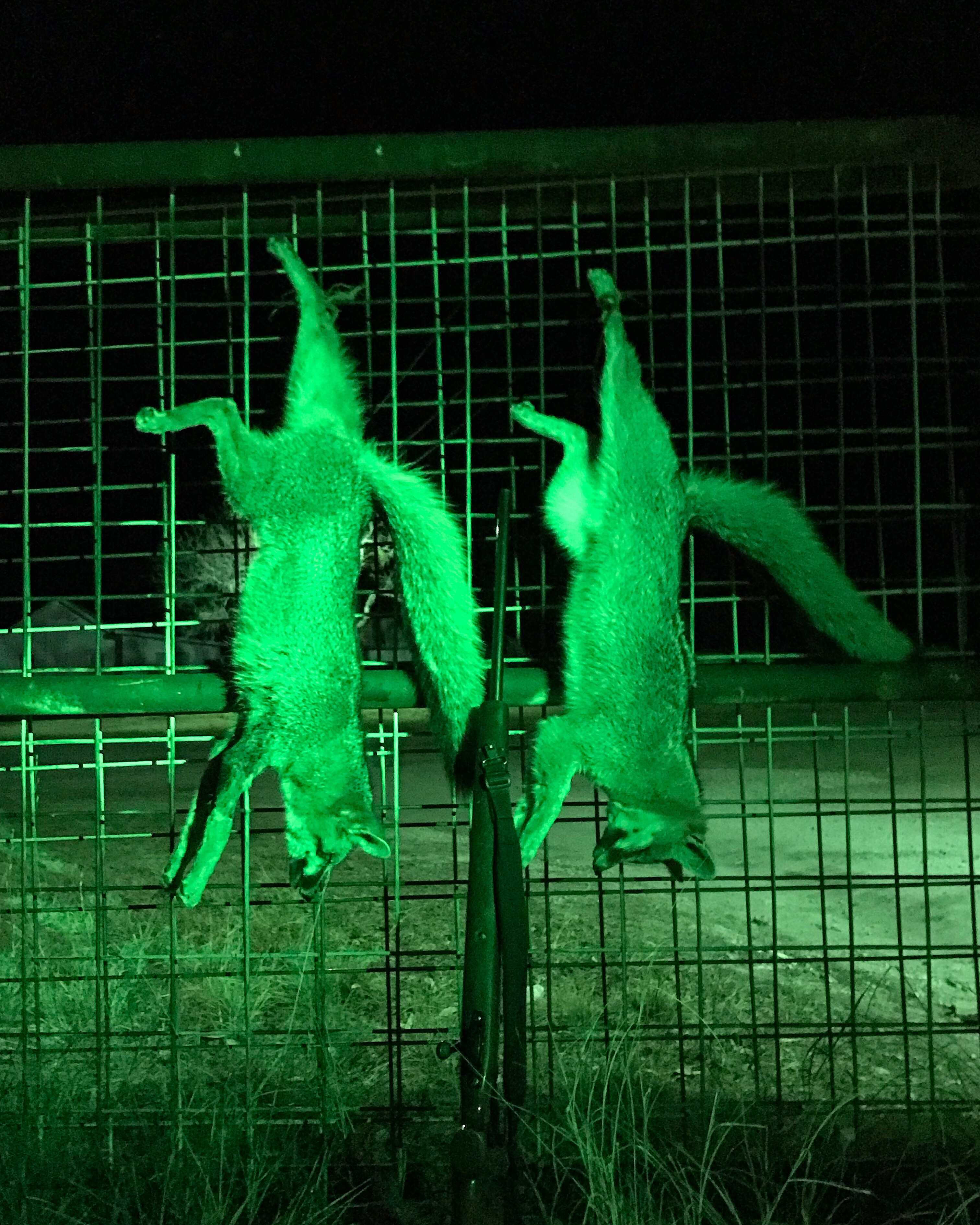
If I see fox eyes coming in the light I like to switch my sound over to a grey fox sound, this helps insure the fox that he’s not going to be dinner but may in fact be able to acquire some.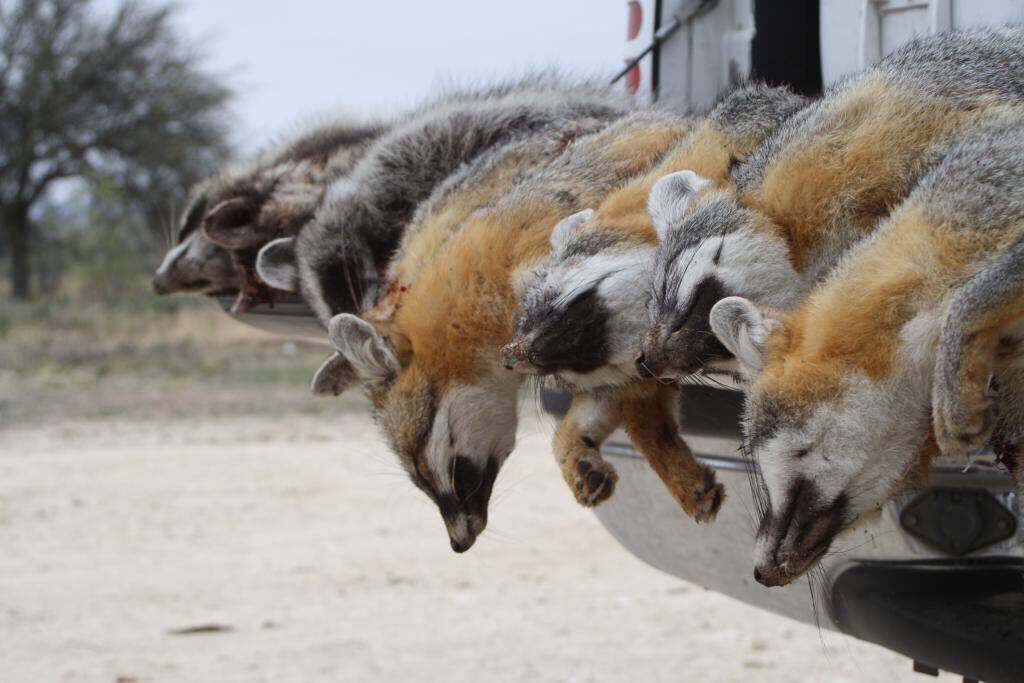
In a place that may have multiple predator species any rabbit distress sound whether made with a hand call or electronic is a good start. Rabbits are a staple in most any critters diet that has sharp teeth.
In most areas a coyotes only danger is man so getting a good wind is their top priority, they wanna know what the situation is, and if you think you can fool their nose you are sadly mistaken. I’ve called coyotes up while wearing street clothes and no camo of any kind and if you keep still and have a back ground to break up your outline you can get away with it but it doesn’t matter if you are in a full ghillie suit and never move a muscle if they get your wind it’s over, period. The only time I’ve seen coyotes come in up wind of a sound is when I was using a coyote sound like female invitation howls or challenge howls. I think the idea is to give what they think is another coyote their wind as a warning or just a heads up. In the case of a female invitation howl a male dog may give you his wind just to say to the ladies what’s up, here I come, other than that and it’s rare don’t even turn the call on if the wind is wrong.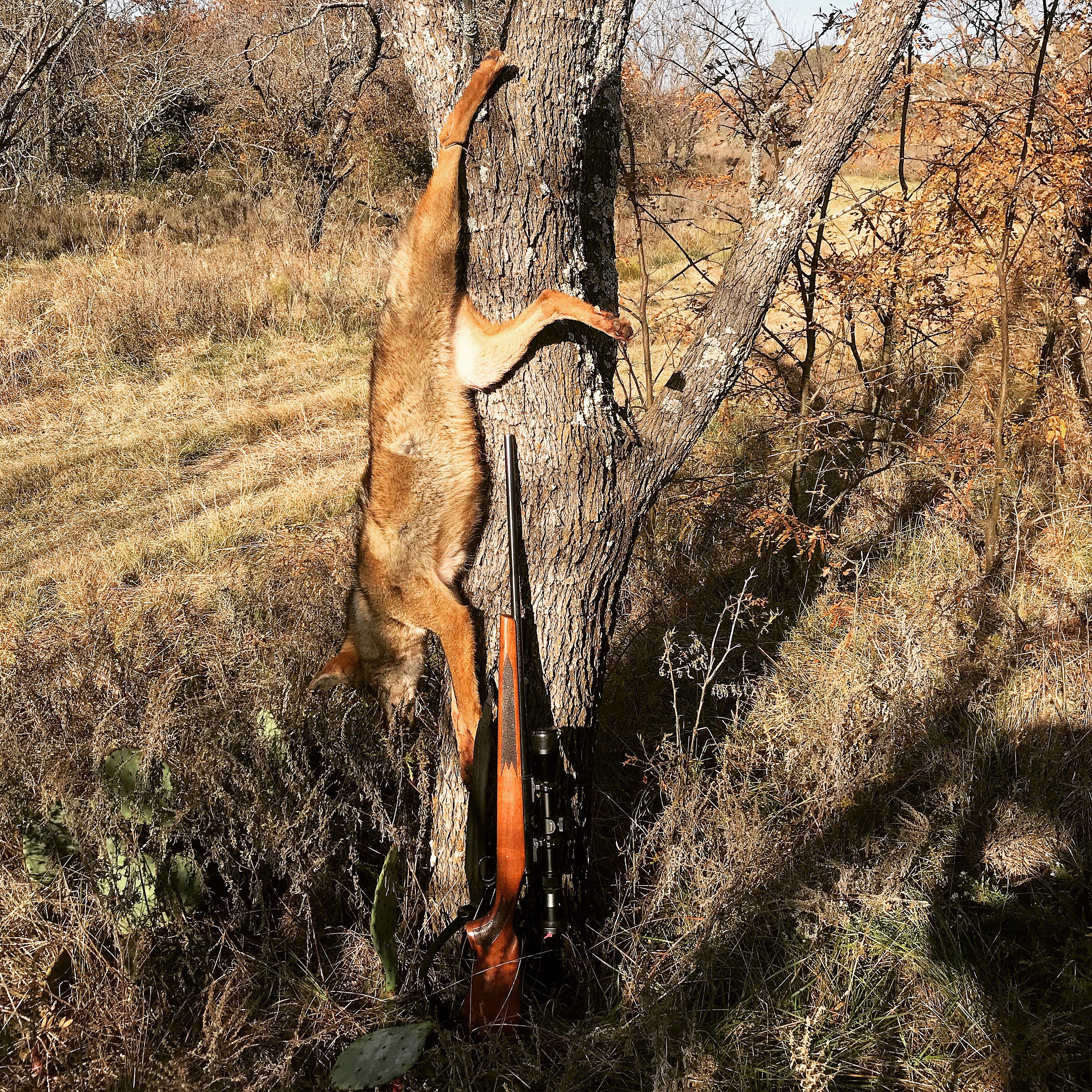
That doesn’t always mean the wind in your face either like some think. Imagine this scenario, you are setting in the corner of a field. To your left is a wooded area that you suspect holds a coyote, the woods run down a couple hundred yards in front in a straight line. To the direct front is wide open country and you approached the area from your right. In this instance I want the wind blowing from behind my left shoulder to out into the field to my right quartering away. Here’s why, the coyote is in the woods to your left he’s going to go down wind he’s not gonna circle behind you so in trying to get downwind which is to your right front he’s going to have to walk across that field out in the open. That’s an easy shot, you better shoot when he’s just entered the field because if he gets too far around to get the wind he’s gone. In most instances wind in your face can be fine depending on the direction you expect the critter to come from but more than half of my stands I set for quartering away wind with the wind blowing to an opening. Coyotes trust their noses over any other sense, even if he thinks he seen something he may stick around for a second but if his nose tells him to leave he’s gone.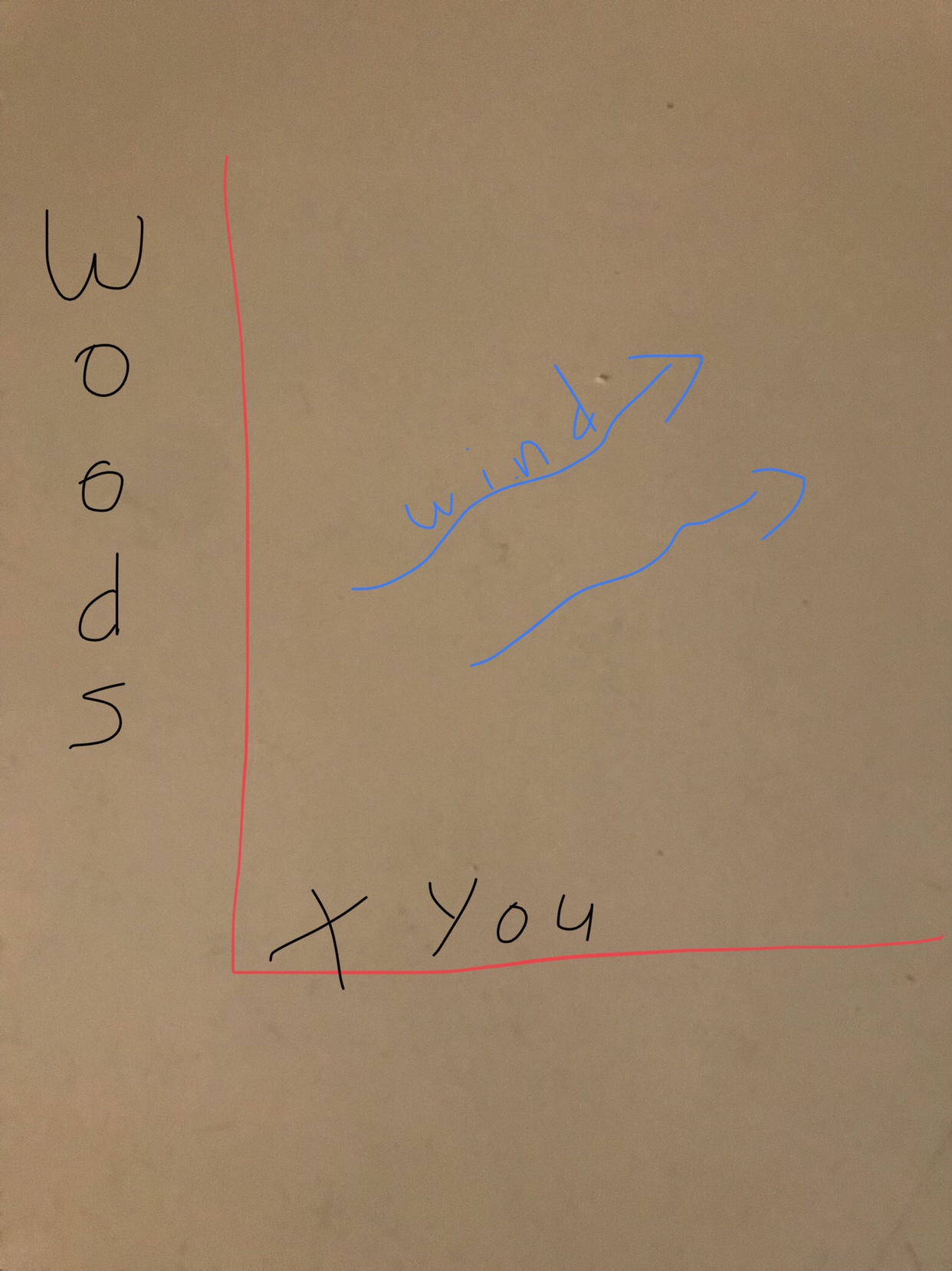
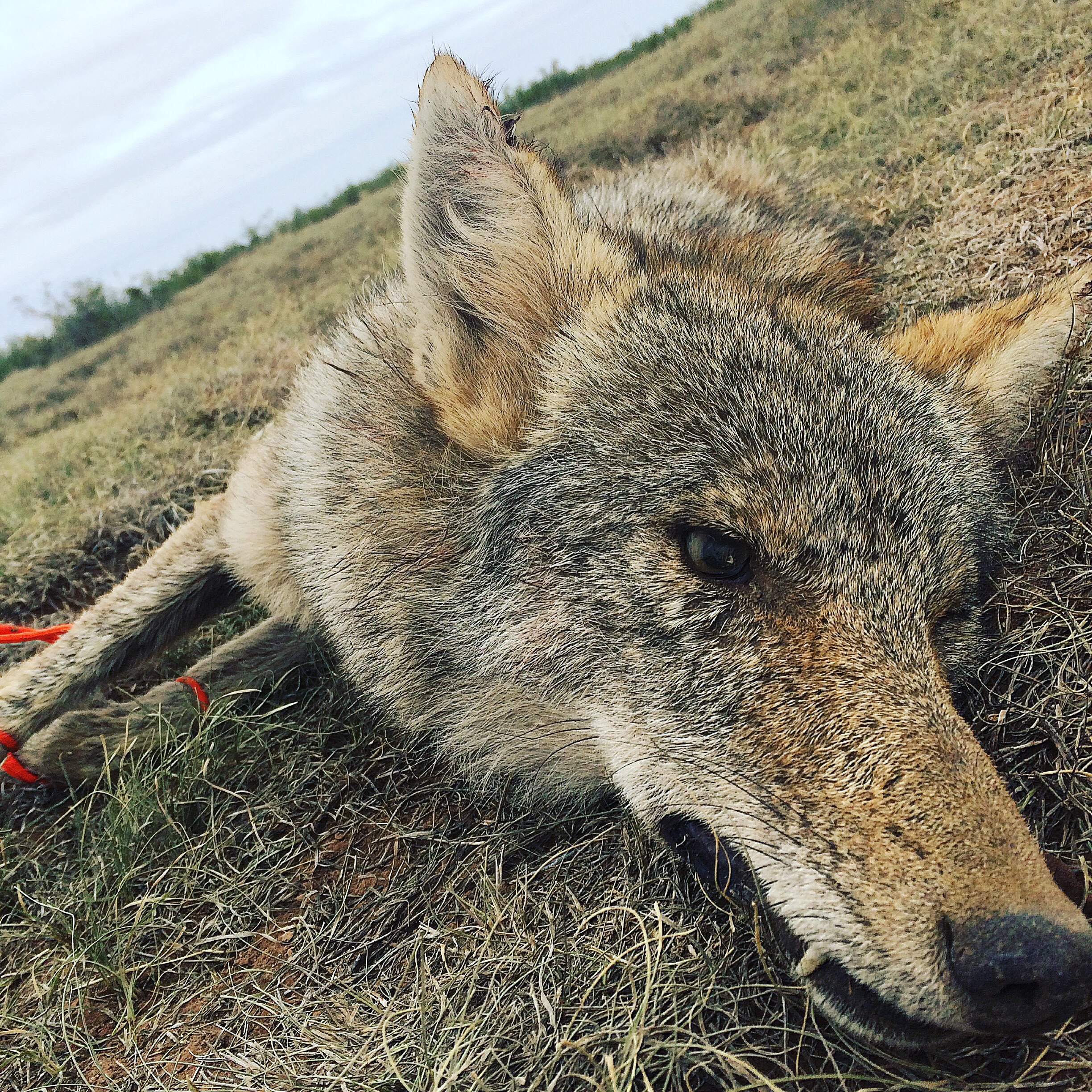
Bobcats don’t use their nose quite as much, just looking at their anatomy will tell you that their nose is not great, by that I mean compared to a canine, they are far superior to humans though. The short round face is not typically on an animal that uses its nose a lot. The longer nose of coyotes and dogs has more Olfactory receptors in it and typically these animals use their nose more. Cats have about three times more olfactory receptors than humans but canines average four to five times more than a cat so you can see why it’s so hard to fool a coyotes nose. In fact it’s rare that I’ve ever had a cat come in and leave for what I thought was bad wind, cats trust their eyes. They can smell you but don’t seem as startled by it as much as a coyote. Now that’s not saying you can go out in full camo and smoke a cigarette with the wind wrong as long as you have good camo. You can’t be stupid but wind is not the major factor I worry about when calling a cat.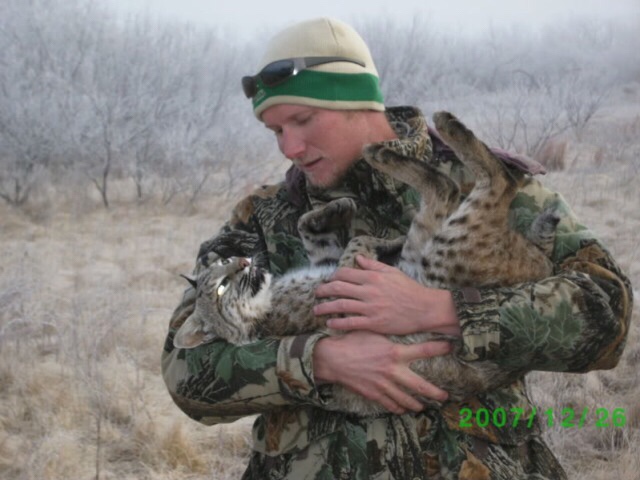
You can learn a lot about bobcat behavior by watching your house cat, they aren’t much different. Kinda lazy, get distracted easily, and are generally just curious animals. The key in my mind to calling a cat is patience. I have called in cats in 2 minutes but in a lot of cases it’s 20 plus minutes and sometimes close to an hour. This depends obviously on the cat population in the area also. In south Texas and west Texas where there are more than average amounts I don’t stay longer than 20 minutes on a stand, there’s too many cats and too much ground to cover to sit and wait. In the case you are say in north Texas where there are less cats I will spend a little more time especially if I’ve seen one in the area.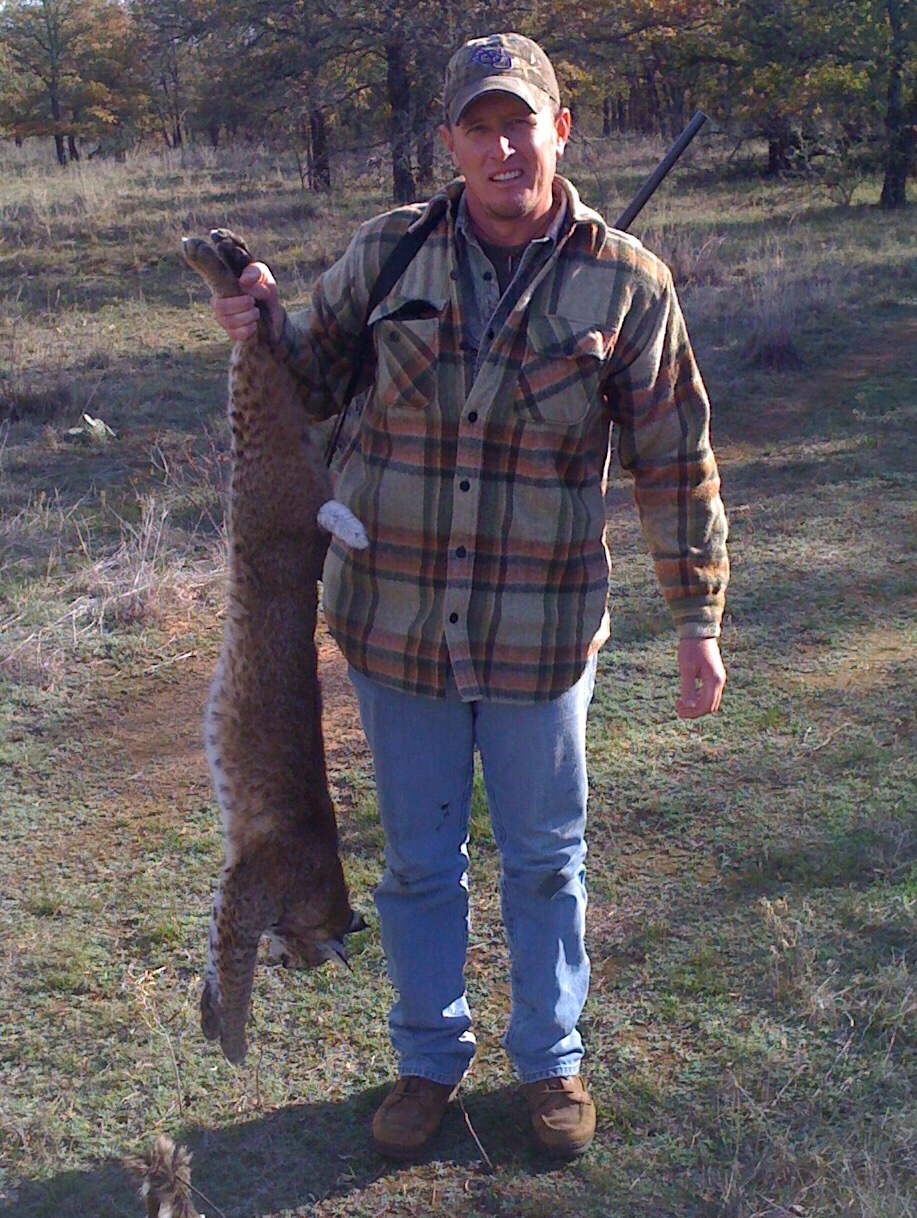
Bobcats, just like your house cats all seem to have A.D.D. I’ve had cats coming into a call and see a bird fly from tree to tree and they start following the bird forgetting all about the call until I switch sounds or volume to remind them what they were doing. A very “busy” call is good for cats. By busy I mean a sound that’s constant like a bird. Fawn bleats do work but they are intermittent and in the time between calls the cat may lose interest.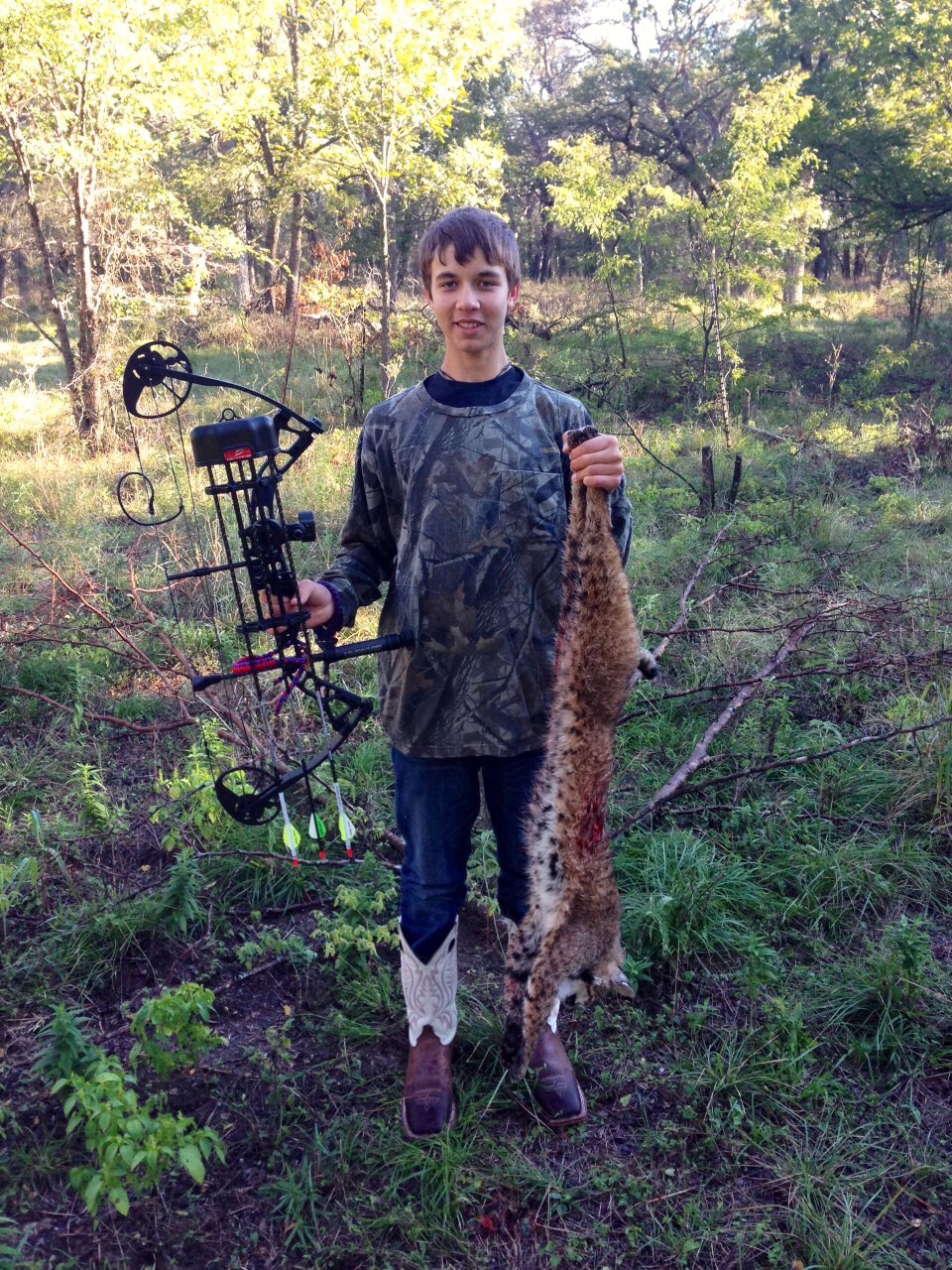
A decoy is actually very useful when calling cats or any predator but especially cats. When they see the movement it keeps their attention and gives them something to focus on. This not only allows you to move to a shooting position but also confirms in the cats mind that there is something worth investigating. He has heard the sound and now seen the movement and in most cases will go over to check it out. Cats have great eyes and can see a feather blowing on a string from hundreds of yards away so you don’t always need a big money decoy. Something as simple as a turkey feather on a string tied to a limb where it can blow can be deadly.
One of my absolute favorite predators to call in is the raccoon. These miniature bears are extremely aggressive and will fight a running chainsaw. They don’t mind fighting anything. I’ve seen them fight coyotes, chase deer off the feeders, chase hogs, and if they can’t find anything else to fight then they will just fight each other , they really just don’t care. This is the secret to calling them in and makes them fairly easy to call.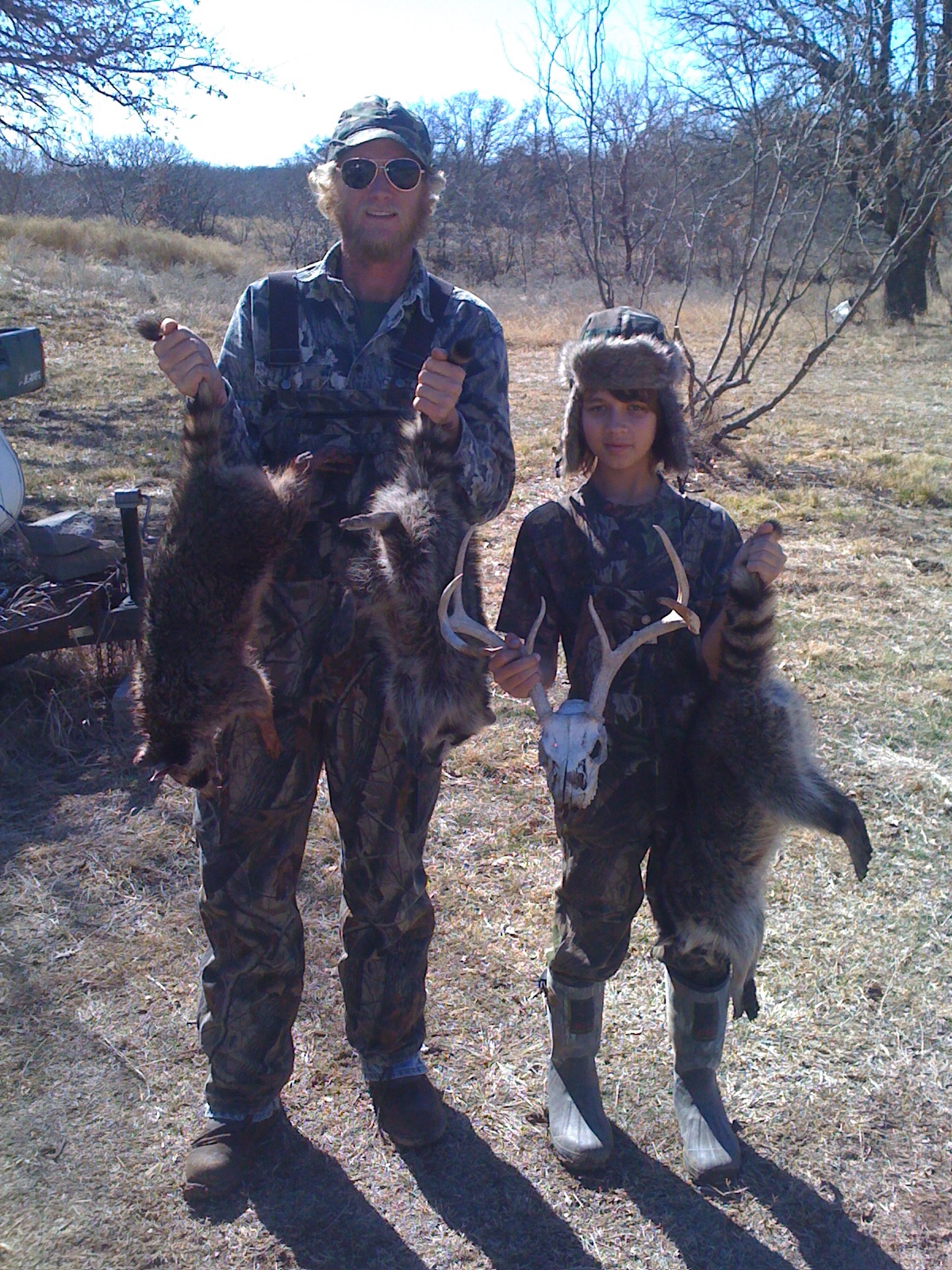
I use a FoxPro exclusively but I’m sure other brands have a similar sound but the raccoon fight made by FoxPro is one of deadliest sounds I’ve ever used. There’s not a lot of sounds that will get a coon to come out of a hollow tree at noon but a coon fight sound will.
This is not hard hunting and is great for beginners or an otherwise slow days calling. If I’m calling and the action is slow and I happen upon a hollow tree I’m stopping and running my coon fight sound near that tree. Doing this has saved me from going home empty handed several times.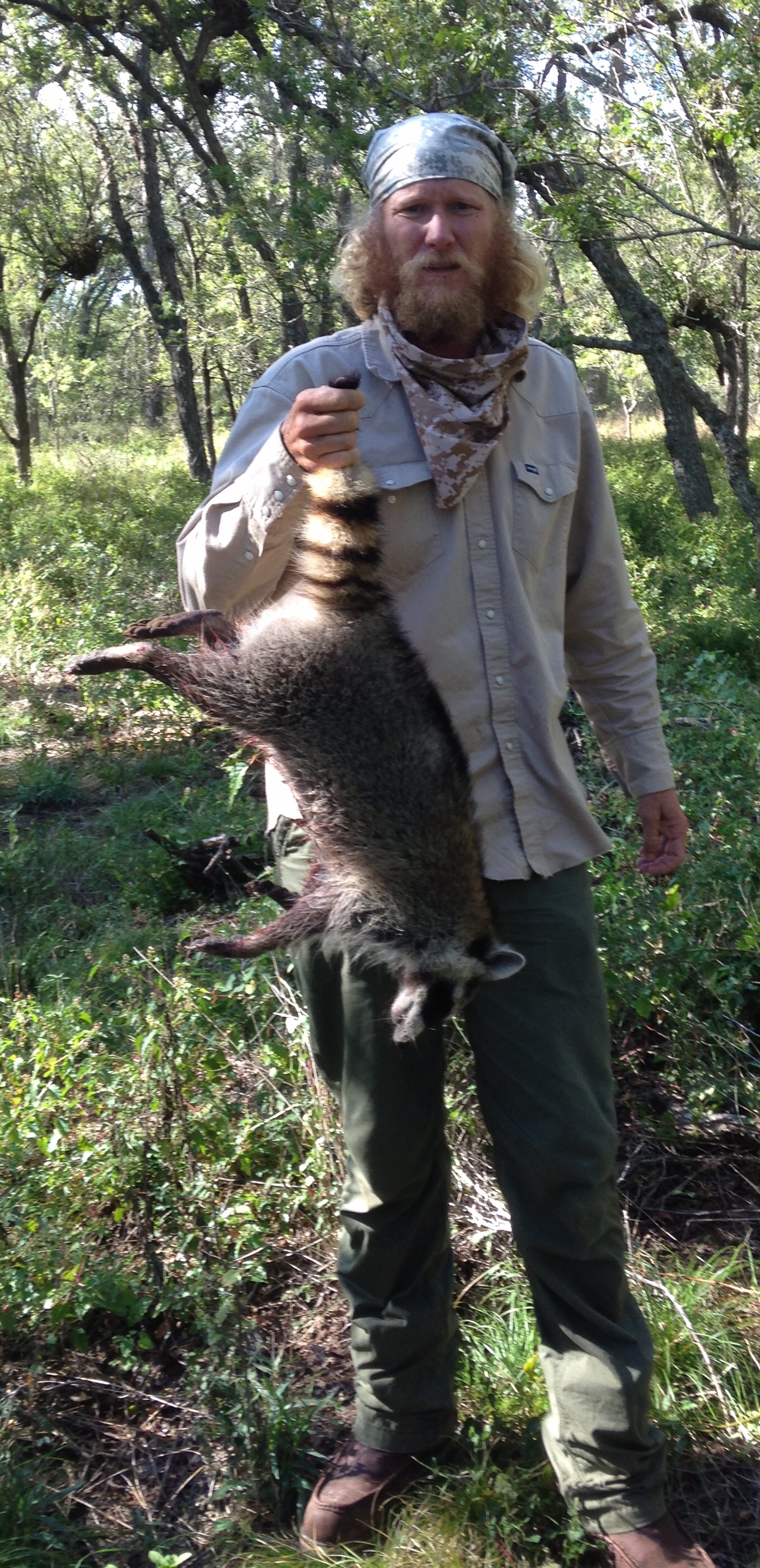
A shotgun is your best choice of weapon as the action is close and usually fast paced but your scoped rifle with the scope turned down to its lowest power will do. Simply place the call near a tree you suspect a coon is in and turn on the coon fight sound. There’s no reason to ease into it either. You are trying to sound like two 20+ pound pissed off critters trying to kill each other so I usually start loud and go louder. It won’t take long at all for them to show if they are there. Within minutes if there’s a coon or even several in a tree they will come out! I don’t really have a theory on why they do this but some will come out and run away as fast as they can, others will come out and attack the call. My FoxPro bares the scars of an angry sow that picked it up and carried it off one night. I don’t know why some run away, if they feel there is danger then why not stay hid in the tree? I don’t know but I do know they will respond. I’ve had as many as 4 come out of one tree and all charge the call.
On one hunt we had one actually crawl up onto the tire of the truck and once had one almost get into the back of our Polaris Ranger.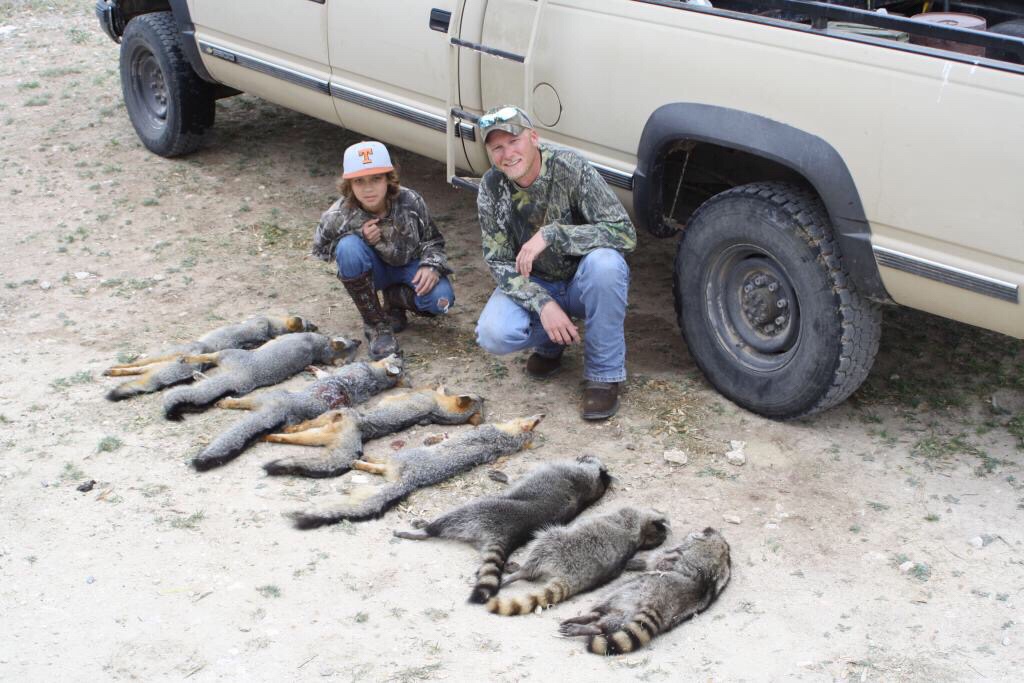
I have a speaker mounted on the outside of a deer stand that I plug the FoxPro into after I deer hunt sometimes. I had two coons under the feeder after an evening hunt one night so I waited for dark and turned on the sound, one coon ran away at top speed and the other ran at the stand at top speed. He crawled the leg, bit ahold of my speaker and hung there until I shined a spot light in its eyes from feet away. When it got fifty yards away again I turned the sound back on and it scaled the stand again. Their behavior is very odd to me and I don’t know exactly why they react the way they do. I’ve called in sows, boars, half grown pups and huge 25 pounders that all came to the fight. I guess it’s like people some have it in them and some don’t but either way if you have a FoxPro you owe it to yourself to load up some 12 gauge or even a bow and go do some day time coon calling.
One over looked animal when it comes to calling is the hog. Although not usually thought of as a predator they will eat fawns, or really anything that don’t outrun them. Hogs are very social animals and communicate a lot to each other through vocalizations. Most folks don’t pay attention to the grunt and squeals but they mean something. Watch a sow with piglets long enough and you quickly learn the sound a sow makes when danger is near. A quick grunt will send an entire litter scattering when mom feels they are threatened.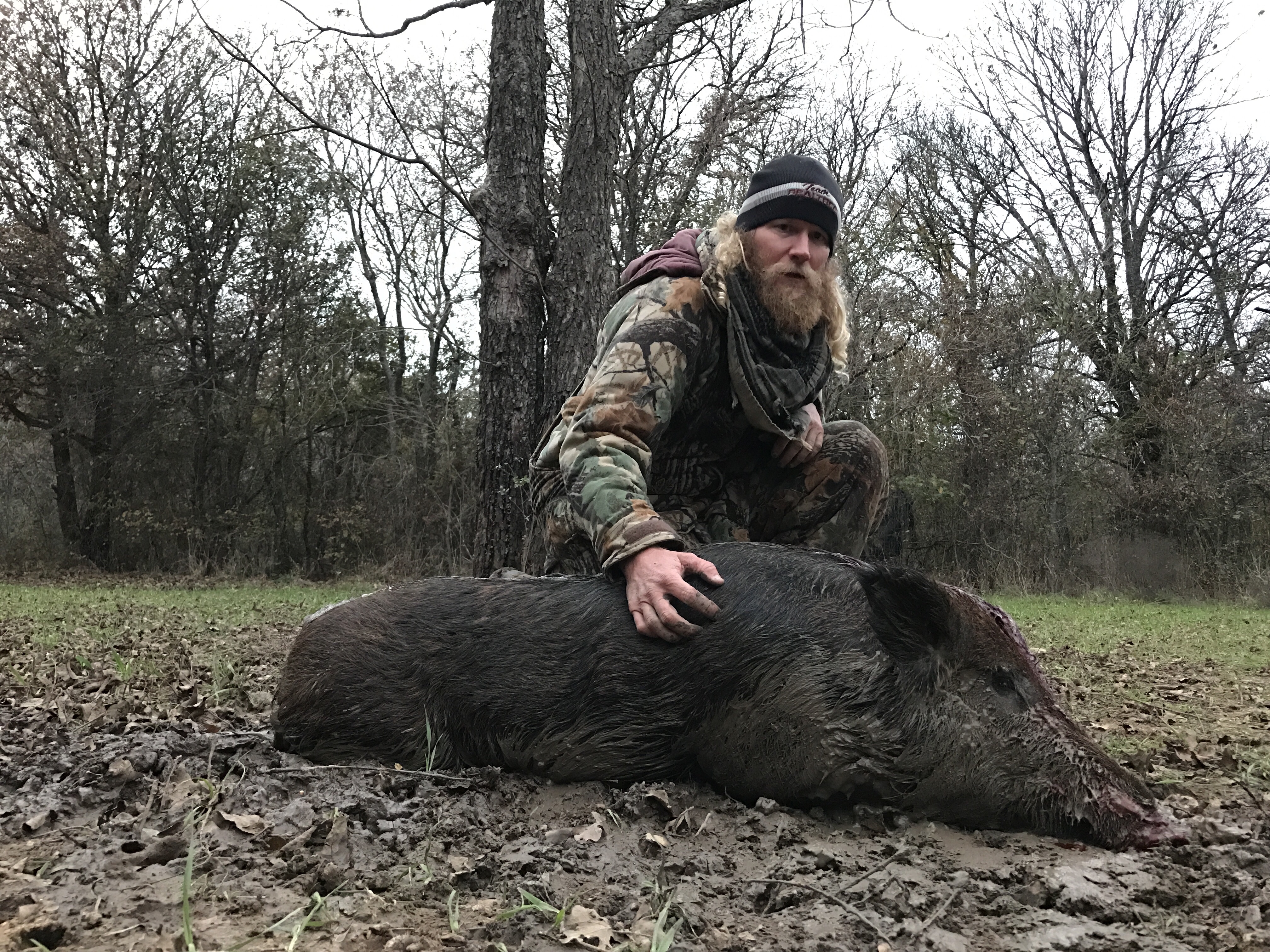
Hogs love to eat, that’s no secret, so it only makes sense that call makers have a hog feeding sound. I’ve used this with mixed results. In the case of the feeding frenzy sound I’ve used it near my feeders but feel that the pigs were likely coming in to eat anyway.
The piglet distress can be a very good sound when a sow is in the right mood but it also calls in a lot of coyotes so if you are in area with both that’s a good sound. In fact I’d say I’ve called in more coyotes with the piglet distress than I have pigs but I have killed some very angry pigs at close range with that call.
One sound that I use a lot is a sound I make with a regular grunt tube and I’m not sure what it’s even called. It’s basically just a content grunt, not aggressive at all. Just a sound I’ve heard sows make with piglets kind of a locator type call as they feed along. The sow will make a short series of short grunts to let the piglets know all is good and I’m feeding over here. Very simple sound, usually a sound that will bring a pig in slowly as they feel no danger or threat or reason to run in. They will walk in just to meet the newcomer to the area. They just want to socialize and see what’s up with the other pig. I’ve never had a pig charge in or show aggression with this sound. It’s very good when stalking and you see pigs that you can’t get a shot at or pigs that may have seen you. A few short grunts together may calm them down as they think it’s just another pig near by.
A huge surprise to me one night was when I was using the coon fight sound and heard pigs squealing, and they got closer and closer and I realized they are coming to the call and they aren’t happy. They got just a few yards away and started to chomp their teeth and really get riled up. This has happened two other times since that first night so I’m convinced now they are coming to the call but I don’t know why. I’m not sure if they are just agitated at the sound itself or they think it’s hogs fighting or maybe they just don’t like coons and know it’s coons fighting and come to kill them. I’m not sure why but it has happened enough for me to know they will come to it.
Just like fishing they can’t bite if they ain’t there so locating predators is pretty much step one. Hogs are easy to locate but some of the others tend to be harder. If you know where turkeys roost on your land that is a great place to start looking for bobcat sign or even the bobcats themselves. Cats make a living hunting at night for the most part and sleeping birds are easy prey.
To find raccoons find water, big hollow trees or logs near a creek or pond is usually a guarantee for them and if you live in a state that allows baiting for deer those feed stations always attract coons so pulling up in the dark near one and playing the coon fight sound will get you results.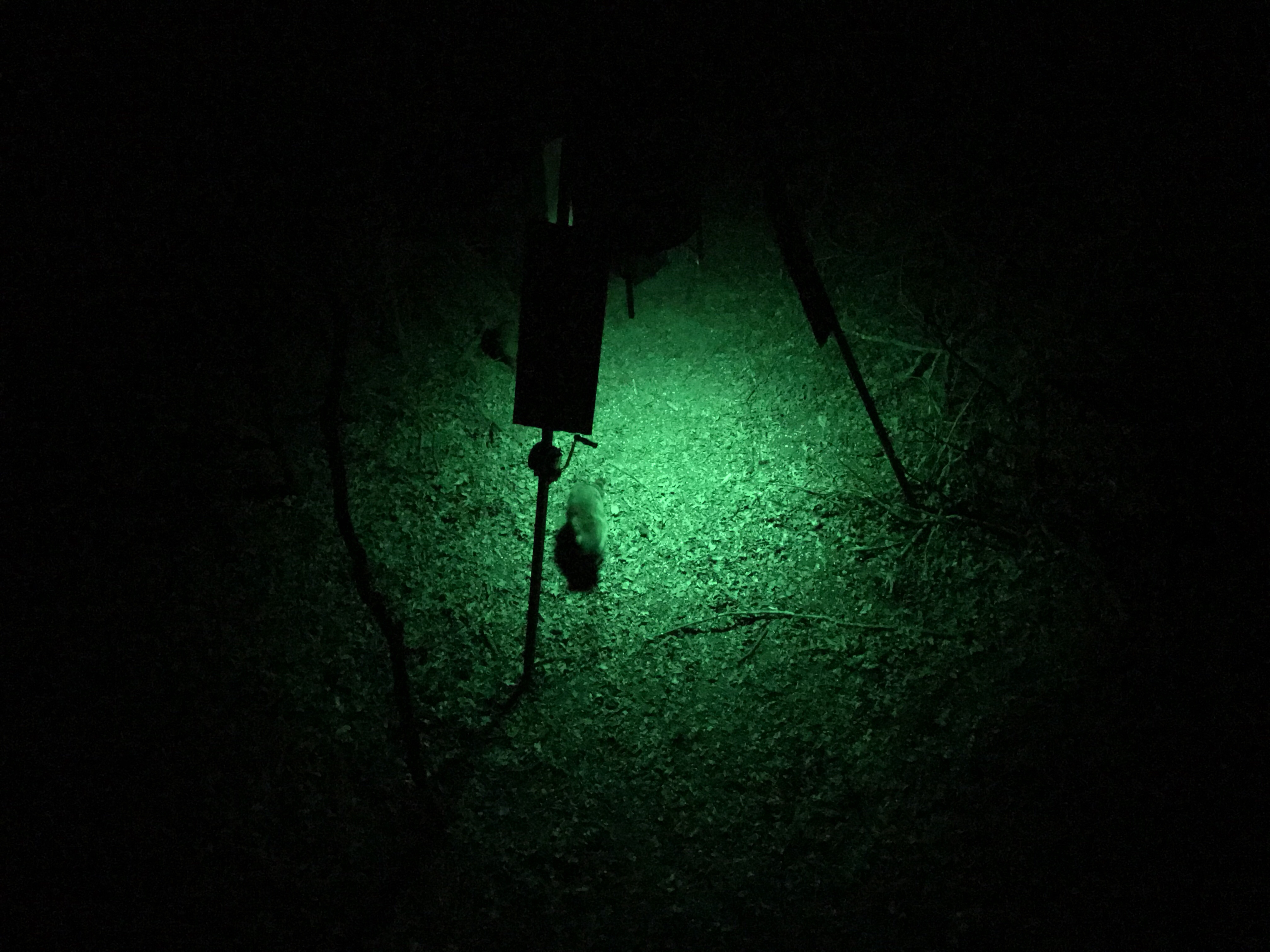
The good thing about coyotes is they will tell you where they are. Rarely have I called a coyote when they were howling with a distress sound. If they are howling or barking your best bet is usually a coyote sound like a challenge howl.
So you found a critter and called him in and made a great shot, now what. Well like I said earlier here in Texas the fur quality is not usually too good but I do skin most of them even if it’s for a few bucks the least I can do is put the animal to use I did kill it. I absolutely love skulls so I usually clean the skulls for display. I have way too many but they are too cool to throw out. Getting a hide tanned to throw over a chair or hang on the wall is great way to display a kill. Although expensive in my mind, a rug is nice, especially of a good looking cat and there’s always mounting the animal whether full body with a huge scene or even just a little shoulder pedestal. I’ve killed countless predators and couldn’t possibly display them all so I give away a lot of skulls and hides.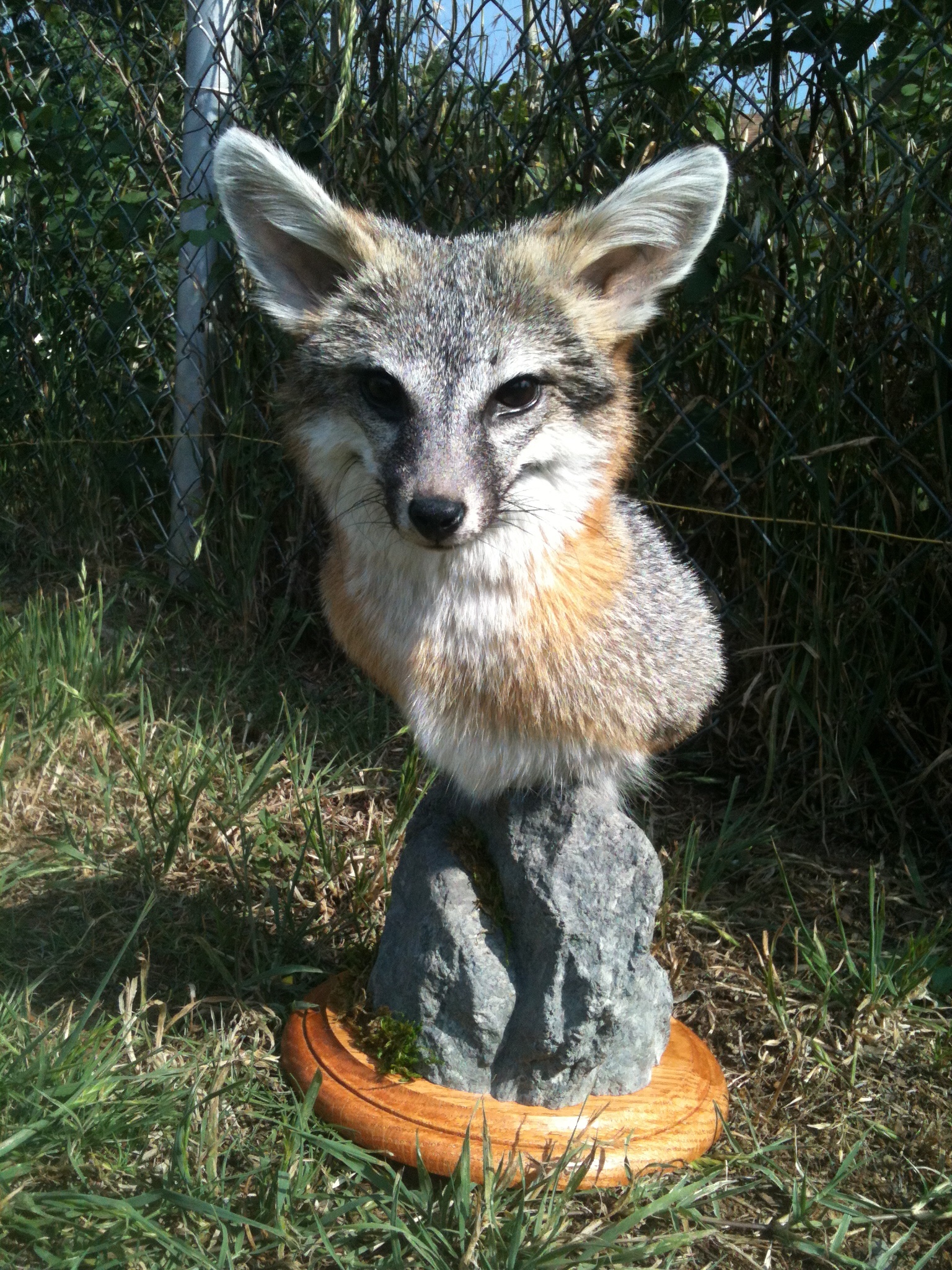
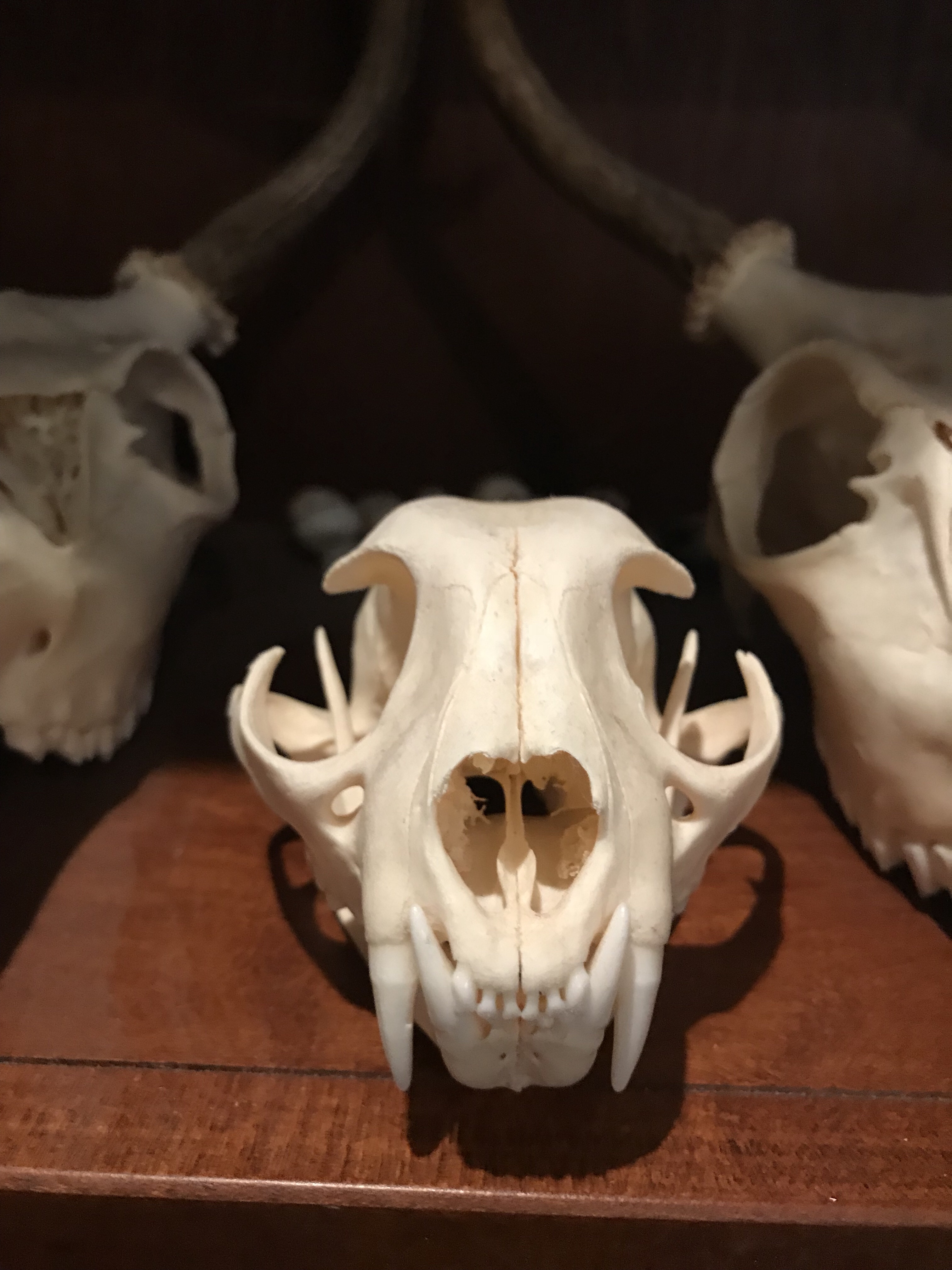
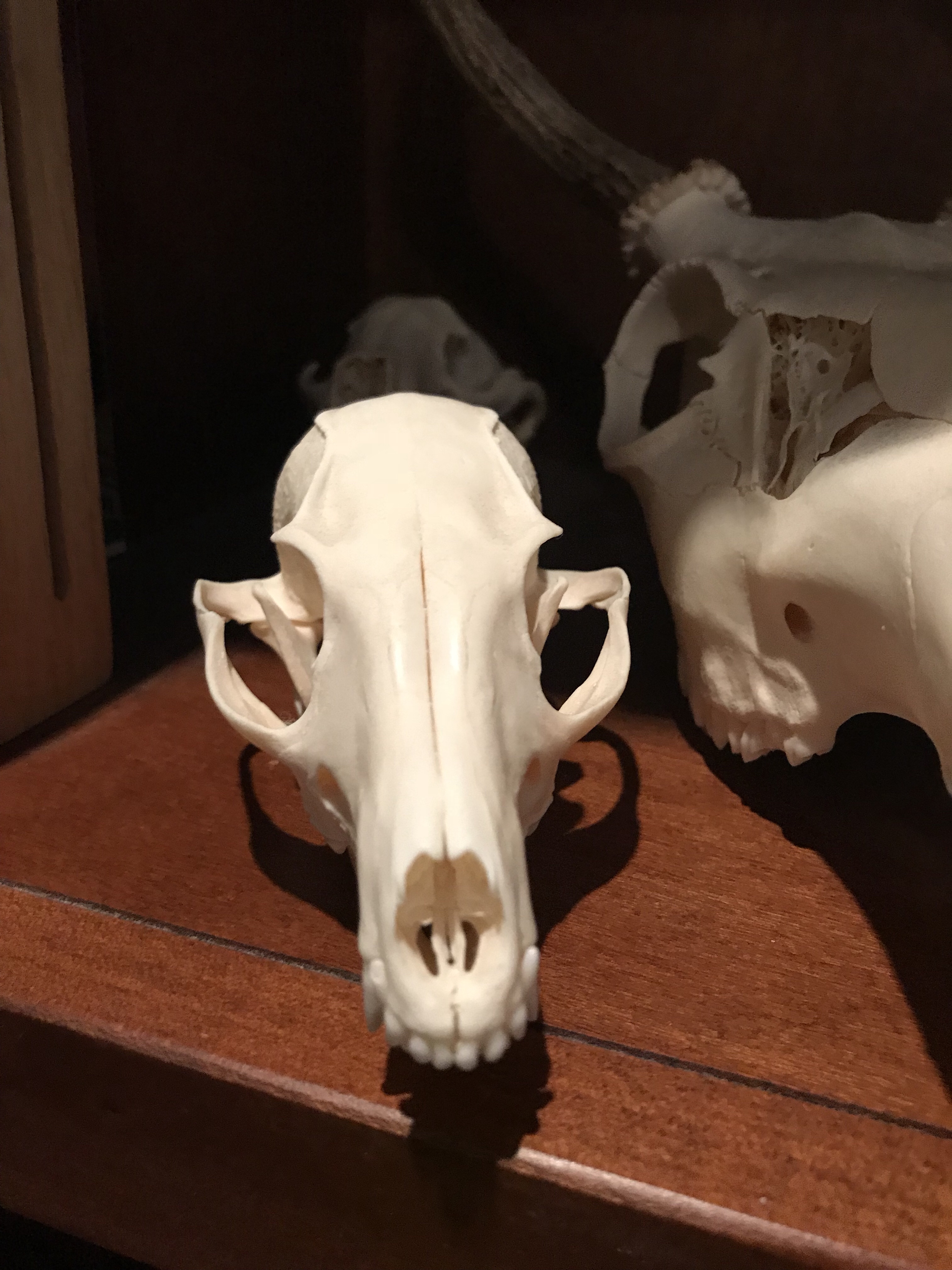
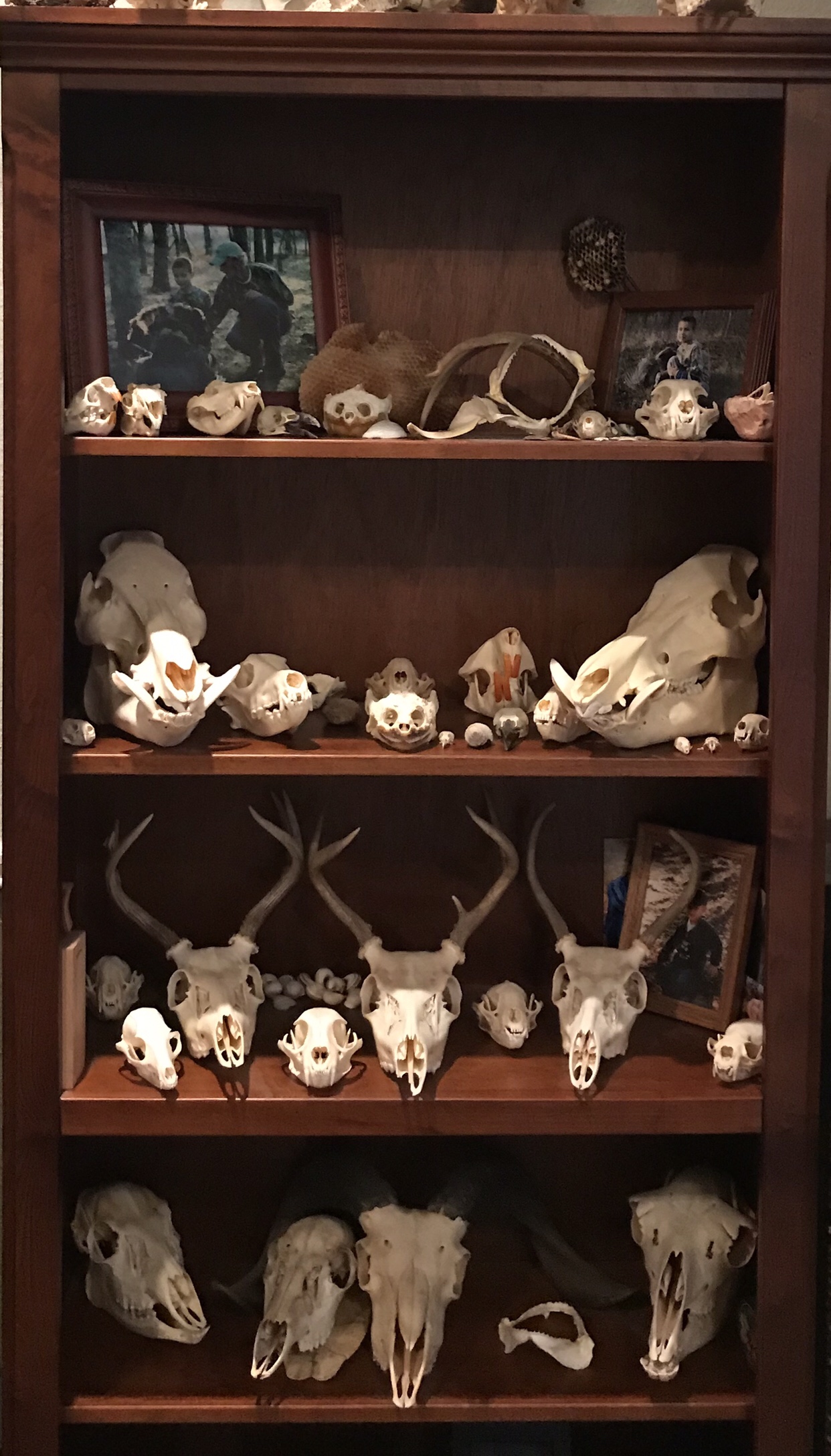
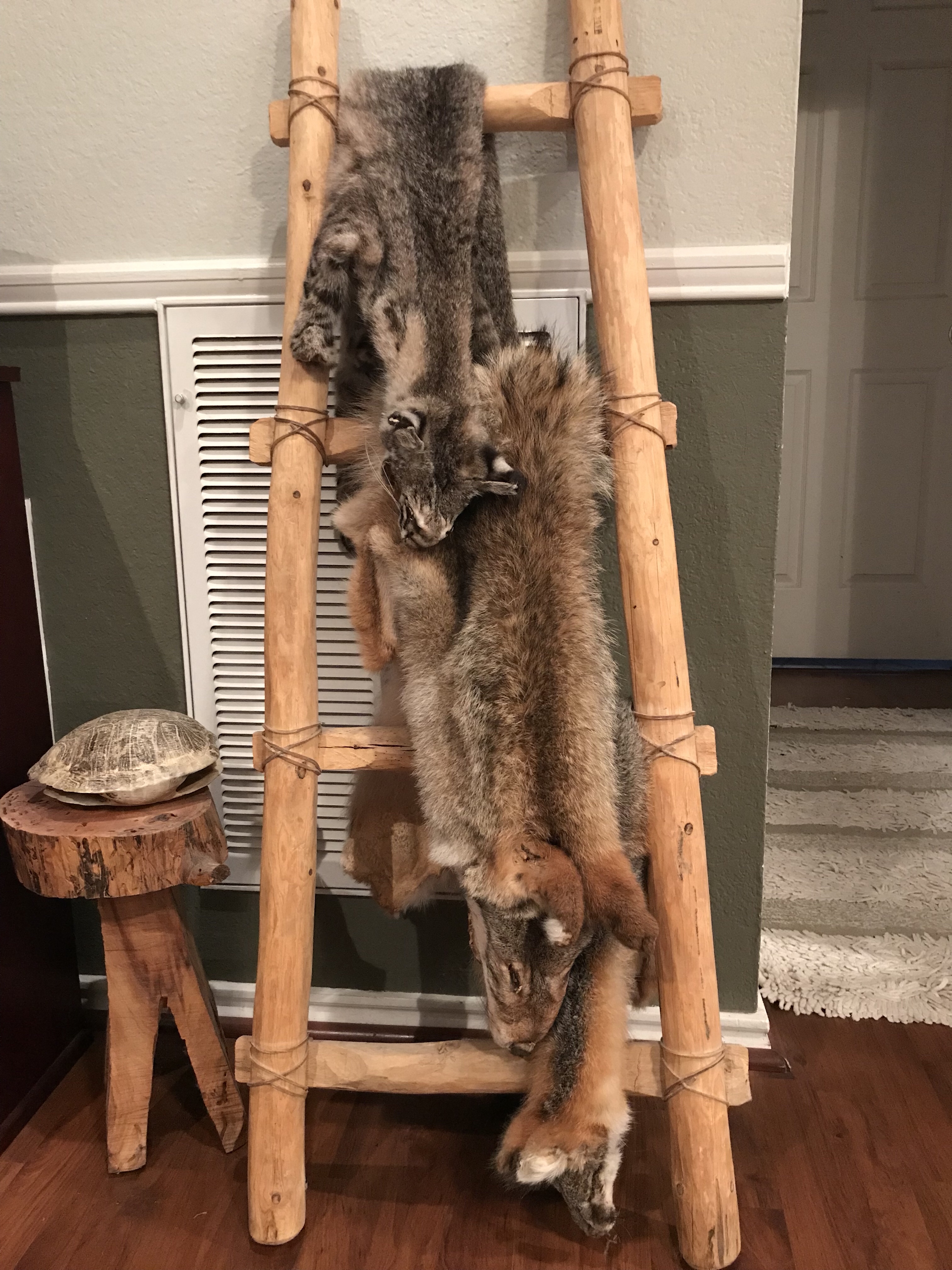
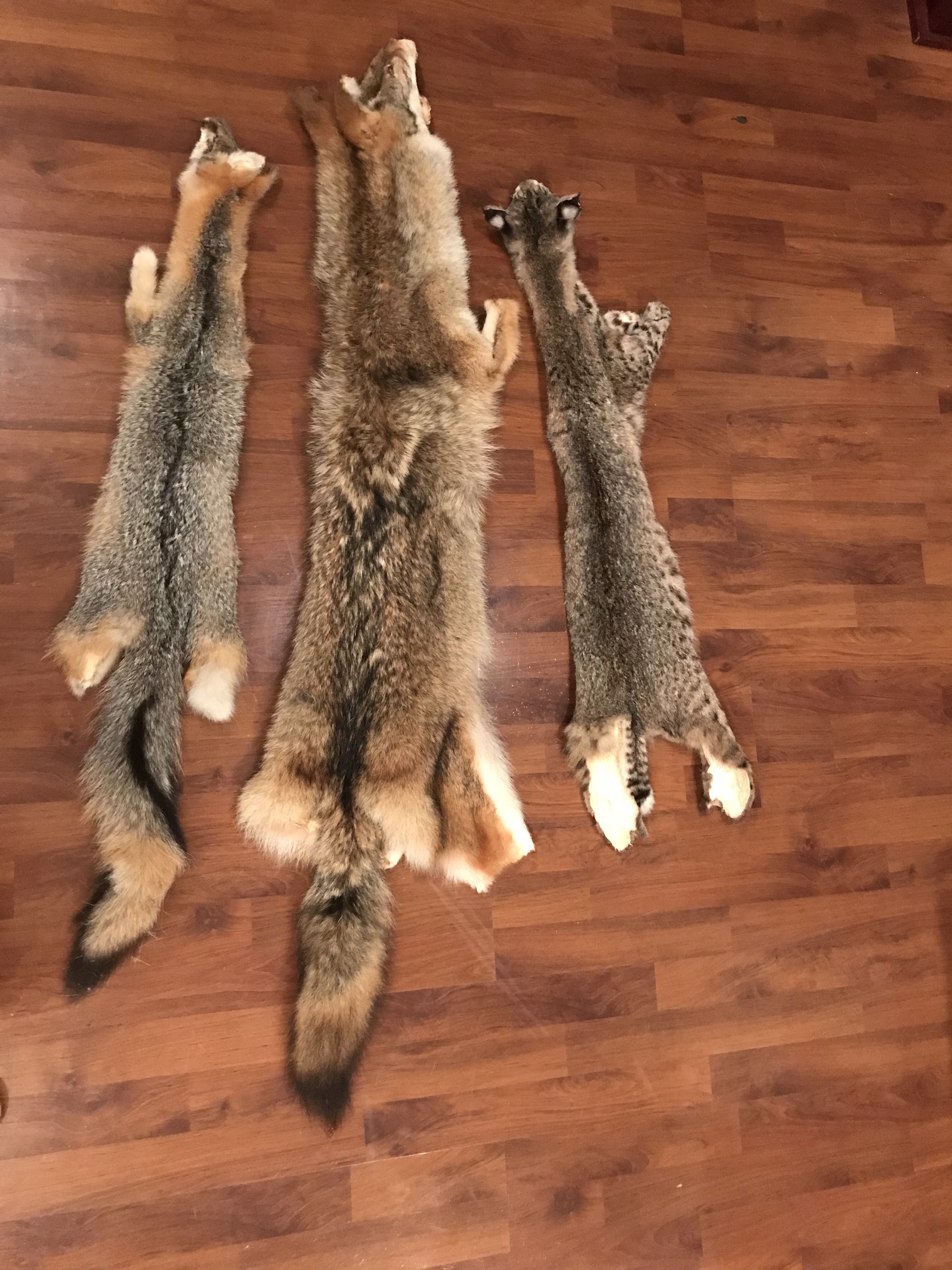
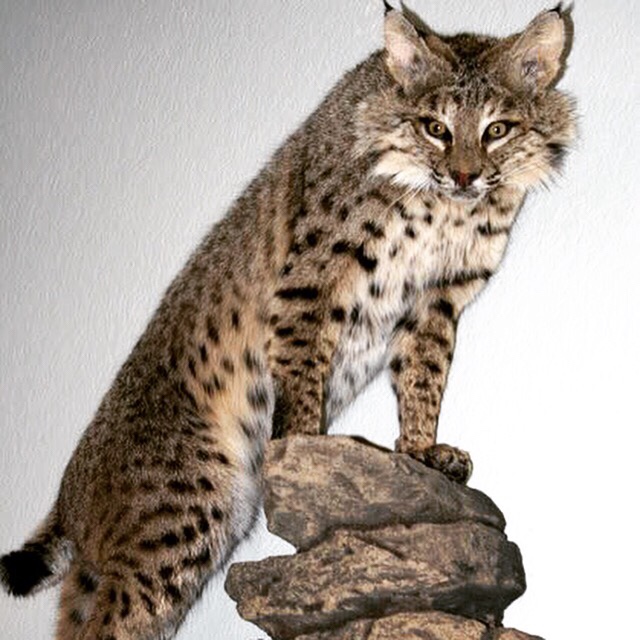
All of these critters can be eaten too. I know most people would never consider eating fox or coyote but grey fox is actually very good. I haven’t eaten coyote but would not be against it and actually plan to just to see if I’m missing out on anything. Bobcat is basically just a small mountain lion so any recipe for mountain lion can be adapted for bobcat. Coon is actually very good meat and can be made into endless things.
So go find a predator get the wind right and go make some sounds. It’s not hard and can be very exciting and if you’re lucky and live where the predators have good fur it can pay for some gas or even a new gun. Don’t be afraid to mess up as long as you learn from it, remember you get to mess up as many times as it takes but they only get to mess up once.

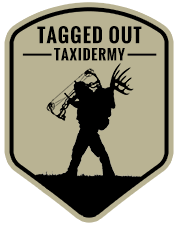
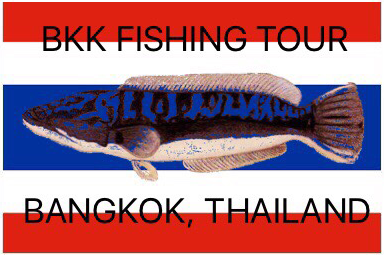
Great article Chris . Really enjoyed.
Thank you sir
Nice article. Definitely gonna try to use this info to thin out the coon population at my lease.
Thank you sir. Calling coons is great fun and you can do it day or night.